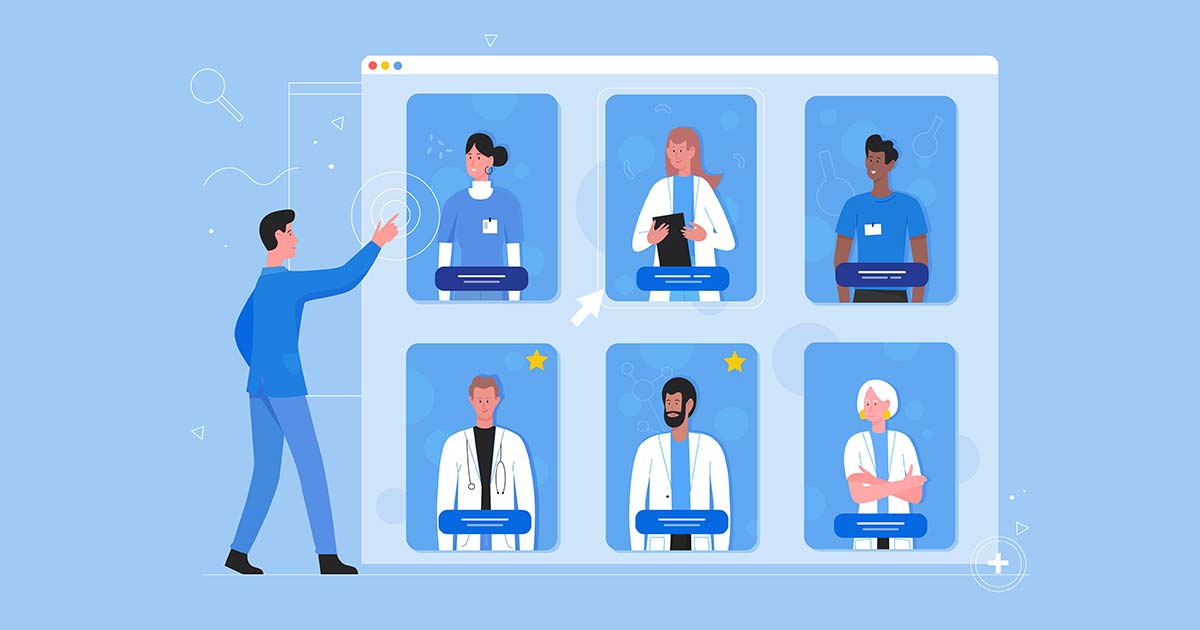
Advice to improve your movement, fitness, and overall health from the #1 in orthopedics in the U.S.
Which Doctor Should You See for Back Pain?
An HSS spine surgeon shares why he may not be the first specialist you should see for back pain—and where to start instead in your search for relief.
Advice to improve your movement, fitness, and overall health from the #1 in orthopedics in the U.S.
Back pain is so common, experts say, that approximately 80 percent of adults will have an aching back at some point in their lives. “Truthfully, it’s probably closer to 100 percent,” says James Dowdell, MD, a spine surgeon at HSS.

If you’re in this group and you’ve been avoiding seeking relief (maybe because you want to avoid back surgery), Dr. Dowdell would like to put your mind at ease. Not only is spine surgery not always necessary for treating back pain, sometimes it’s not even helpful.
“There are so many variables when it comes to back pain,” he says. “How it can be treated depends on what’s causing it. Ultimately, some types of back pain can be helped with surgery, and some can’t.”
For example, a herniated disc (when the tissue between vertebrae moves out of place) may be helped with surgery, while arthritis of the spine (a breakdown of cartilage between the vertebrae) is often managed with physical therapy, exercise and anti-inflammatory medications. If you wind up straining your lower back (say, lifting heavy boxes), you may be able to treat it at home with rest, stretching, ice or heat, and anti-inflammatories. (Of course, if you hurt your back in an accident or fall, seek emergency care, especially if it affects your control over your bowels or bladder.)
The one thing that’s the same for nearly everyone, says Dr. Dowdell, is which type of doctor to approach first.
Here’s where he suggests you start, what to expect...and what may happen next if your pain doesn’t go away.
Start with a Physiatrist...
Unless you need to see a primary care provider for a referral, Dr. Dowdell suggests visiting a physiatrist as your first step. “A physiatrist is the primary care doctor of the back,” he explains. Physiatrists are fully focused on diagnosis and non-surgical treatment of musculoskeletal (muscle and bone) issues, so they may have more specialized knowledge than a PCP. Even if you’ve already told your family doctor about your back pain, it’s a good idea to talk to a physiatrist next—especially if whatever you’ve been trying isn’t working.
Who Will Likely Refer You to a Physical Therapist...
Generally, the first course of action for ongoing back pain is six weeks of physical therapy, plus at-home treatments like those mentioned earlier in the article.
Physical therapists can also do assessments of how you’re sitting, standing and moving—and show you how to improve your workspace and posture, for instance. And they’ll create an exercise or movement program (just for you) that’s designed to help your back feel better.
If You’re Still Not Better, You’ll Likely Get an MRI...
If you’ve finished your PT but your pain’s not improved, your physiatrist will likely send you for an MRI. This type of test looks at what’s going on inside your body using a high-powered magnet. An MRI can help doctors see if a nerve is being pinched, if there’s wear-and-tear on the cartilage or bones, or if there’s another physical problem that might be at the root of your pain.
The MRI Will Likely Be Looked at by a Surgeon
Often, a spine surgeon like Dr. Dowdell will review a patient’s MRI results and come up with the next step in their treatment, which may or may not be surgery.
“My job as a spine surgeon is not only to do surgery but to diagnose people properly and get them to the right doctor if surgery isn’t going to be helpful,” he says. “Some patients are frustrated when I say surgery won’t help them, but it would be worse if I did surgery, and it didn’t help or made things worse.”
Dr. Dowdell says that surgeons sometimes recommend non-surgical treatments, too, such as corticosteroid injections, which not only can provide relief but help them determine where the pain is coming from.
Even if surgery is the recommended next step, know that you may be able to have a minimally invasive procedure—that is, one that results in less pain and complications and a quicker and easier recovery.
If Surgery Isn’t Recommended, a Pain Specialist Is Your Next Stop
If, despite the treatments you’ve tried, pain persists, consider making an appointment with a pain management physician, which is a doctor with specialized training in the assessment, diagnosis and treatment of pain. Some may further specialize in particular types of pain, such as back pain.
The pain management doctors in the Pain Management Division of HSS are board-certified in pain management and have completed additional graduate training. Their first step is to do a thorough evaluation, discuss how your pain is impacting your everyday activities and life goals, then develop a customized approach to treatment. This might include physical therapy and at-home exercises.
The HSS team recommends prescription medications only when medically necessary — and even then, they aim to prescribe as small a dose as possible for as short a period as possible to help prevent dependency problems. It’s important to describe your symptoms, goals and concerns (including any about medications) and find a pain management team that treats you with compassion and respect.
You May Also Benefit from Talking About It
Dr. Dowdell says that another type of specialist — a psychiatrist — can be beneficial in helping people deal with long-term pain, which has been linked to anxiety and depression.
“I tell my patients, ‘I don’t think your pain is all in your head. I think you’re really feeling it. And I think dealing with how that affects your mental health might make you feel better as well,’” he says. “Everyone experiences pain differently. Some people are more sensitive to it than others.”
Understanding how pain affects the brain is so important that every HSS pain management doctor is required to finish four years of medical school, four years of residency training in pain management, and one year of additional training in relevant fields including psychiatry.
When Is the Right Time to Seek Help for Your Pain?
Dr. Dowdell says it’s rare that anyone comes to him after a week of back pain. It’s more common that people have been living with pain for months or even years, and finally they decide they’ve had enough.
As with many health conditions, though, the sooner you get seen by a doctor, the better. “If you get help within the first few weeks or months of having ongoing pain, you might be able to prevent it from becoming a lifelong battle,” he says.
What’s more, having spine pain for a long time can create pain pathways from your back to your brain, says Dr. Dowdell. As pain signals travel back and forth, the pathways get more and more well established, which can make pain harder to treat later on.
A final note from Dr. Dowdell: Whenever you decide to seek help, you should understand that treatment may be a bit of a journey.
“You’re not going to walk into the doctor’s office and walk out with a quick diagnosis,” he says. “When you’re in pain, that message can be hard to hear. But treating back pain is something that needs to be done one step at a time.”
Published 5/22/2022


